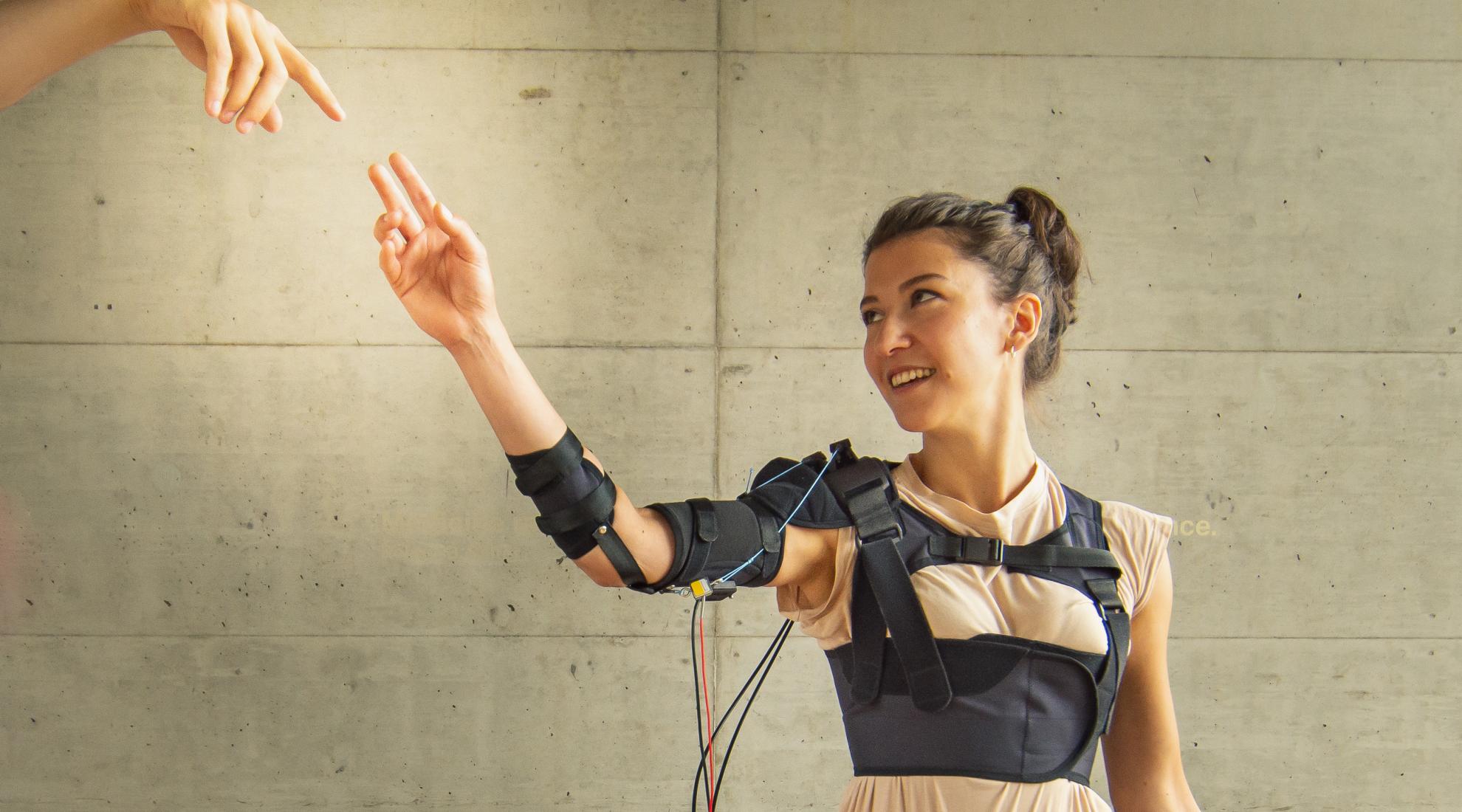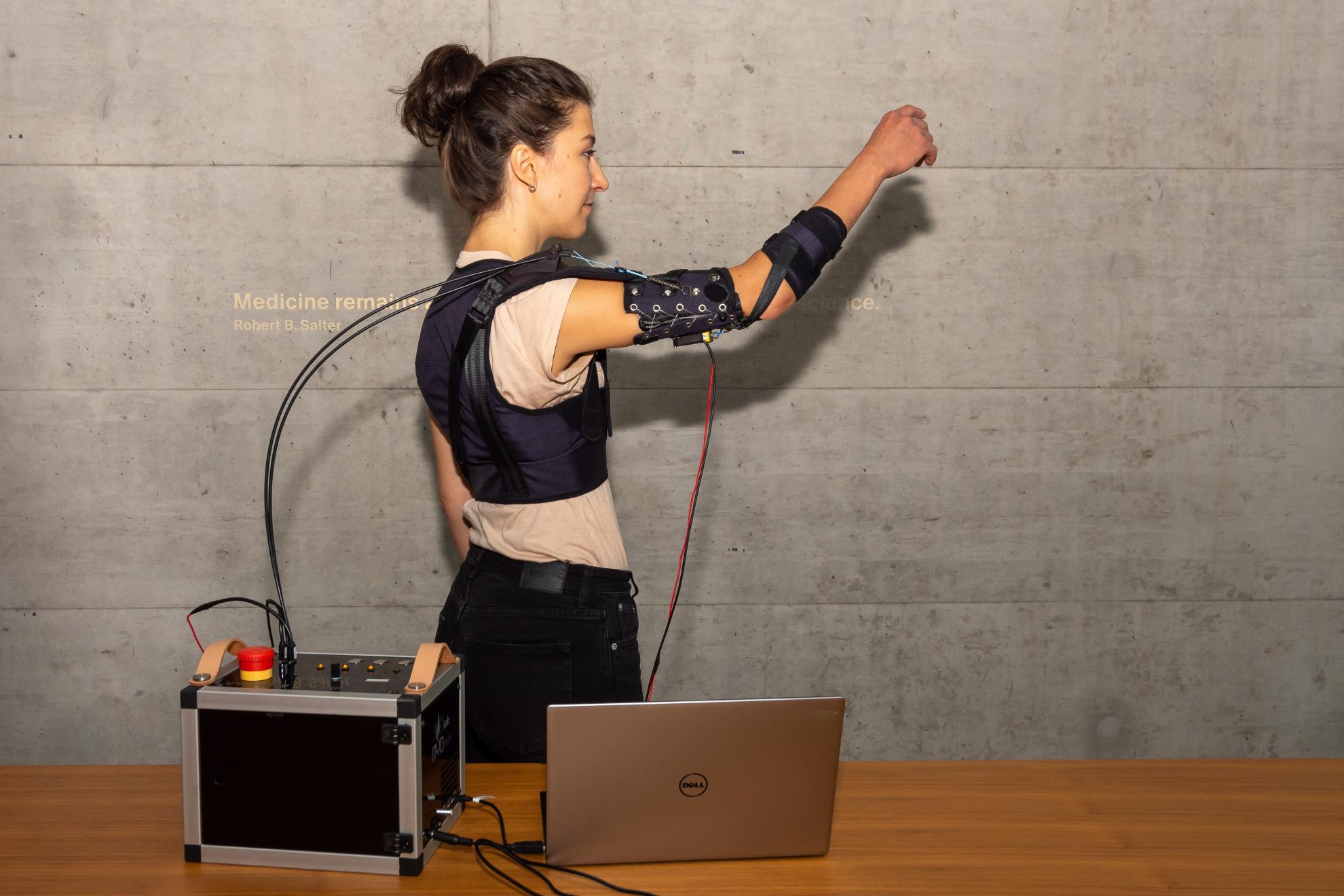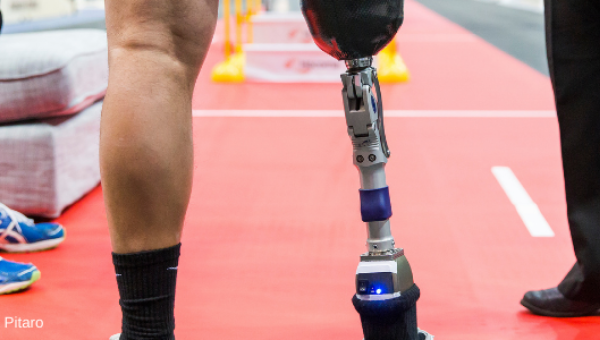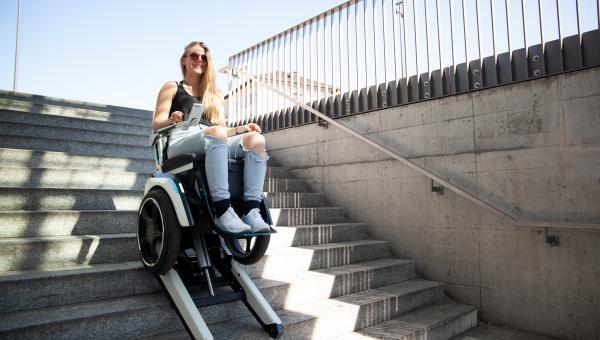Special shirt for people with muscle diseases

People with muscle diseases and spinal cord damage have cause for new hope: researchers at ETH Zurich have developed a wearable textile exomuscle that serves as an extra layer of muscles. Using artificial intelligence, they can regain the ability to move.
Spinal cord damage limits a person's movement to a big extent. Although hospitals have numerous good therapy devices at their disposal, they are often very expensive and unwieldy. And there are few technical aids that patients can use directly in their everyday lives and draw on for assistance in performing exercises at home. Researchers at the ETH Zurich Sensory-Motor Systems Lab set out to close this gap.
Wearable muscles hidden inside a shirt
The latest development from ETH Zurich is a prototype called Myoshirt. This ‘shirt’ is a soft wearable exomuscle that looks like a strange jacket that can be worn over regular clothing. This artificial accessory muscle consists of a kind of vest with cuffs for the upper arms and a small box containing the technology for the movement aid, which is not directly needed on the body.
Algorithm recognises the desired movements
A lot of artificial intelligence is involved, because an algorithm uses sensors in the fabric of the Myoshirt to detect the movement the wearer wants to make. A motor then shortens a cable running parallel to the muscles in the fabric to support the movement. This cable is a kind of artificial tendon. The user, whose natural movements are restricted, never loses control of the device and can override it at any time. The exomuscle cannot become independent.
Successful tests with twelve subjects
The researchers have tested this prototype for the first time in a study featuring 12 participants: ten people without any physical impairments, one person with muscular dystrophy and one person with a spinal cord injury. The results have been published in an article for the Nature Machine Intelligence Journal, giving more detailed insights into the work. The results were promising, according to ETH Zurich. All twelve subjects were able to lift their arms and also objects much longer than without the Myoshirt. The endurance time increased by 60% for the participant with dystrophy, while the person with the spinal cord injury was able to last three times as long.

The next goal in the research is to make the actuator and control box smaller.
Despite the promising results, the Myoshirt is still only a prototype. The researchers are continuing their work and are attempting to make the actuator and control box – currently 4kg – smaller and lighter so they can be worn under clothing. They are also collaborating with ETH spin-off MyoSwiss, which is developing a robotic suit to support the legs.




